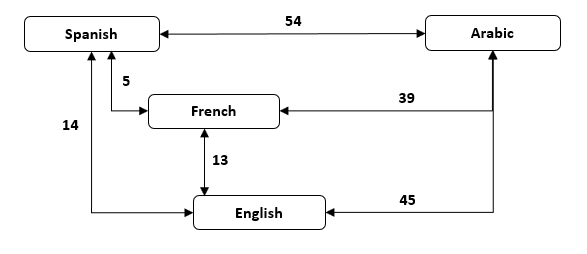What are the most spoken languages in the world?
When your company decides to increase its exports, chances are language plays a key role in choosing which markets to target. Investing in that export market means investing in that language - and what are the costs and benefits of adding a language to your export base? Focusing on four of the most spoken languages globally, this blog sets out some of the main linguistic issues exporters face when expanding their businesses into new markets with different languages. What are the most spoken languages? How many countries speak Spanish, or Arabic or French? What knowledge of the language do you need to be competitive? How different is the language to your native language? And what about English – is it really a global language?
Using one language for several geographic markets gives an obvious advantage for your export business. The more people sharing a language, the easier it is to communicate, build relationships with potential customers, partners and distributors and the less risk for misunderstanding! Opting for the largest trade languages, therefore makes great business sense, but beware – even within one language, there are local differences. Investing in Spain and adding Spanish to your export toolkit for example, will help you do business in South America as well as in Spain. But the Spanish in Spain is not the same as the Spanish in each South American country and each market will still have to be localized and optimized individually.
What are the major trade languages?
Major trade languages are defined as those spoken by at least 100 million people and acknowledged as an official language in at least 10 countries. Today there are four major global trade languages: English, French, Spanish and Arabic.
.png?width=596&name=bella%20blog%201%20(2).png)
The numbers on the table above look impressive but not all these speakers use the major trade languages as their primary or “mother tongue”. India, for example, includes English as an official language (language de jure) but it is most people’s second or even third language. The table above shows over 2 billion people speaking English in 63 countries, but the number of people speaking English as their primary language throughout the world is about 360 million.
Why are these languages important for your business?
Besides looking at the number of people and countries that speak a major trade language, you should also consider any synergies your business has with your other export languages. The linguistic distance (LD) of languages is measured by the similarity of words. The greater the similarity, the shorter the distance between the languages. If your business is already doing business in French, for example, adding Spanish might make good business sense as these two languages have a short linguistic distance and therefore an easier add-on.
How different are the major trade languages?
Relative distances between major trade languages

The closest language pair is Spanish and French while the greatest distance is between Arabic and Spanish. English has a relatively low LD to Spanish and French but a fair distance to Arabic, and not surprisingly, Arabic is perceived as one of the most challenging languages for English speakers to learn. Besides the different letters, Arabic is read from right to left and has many different dialects.
While we talk about major trade languages, none of them are homogenous – all languages have regional differences and dialects, varying in pronunciation, vocabulary, spelling and even meaning. This is crucial for optimizing websites and all online communications like social media: getting the right keywords is essential for getting found, being understood and doing business internationally. While your business investment in Spain, can help you communicate better with your South American prospects for example, your online presence still has to be tailored to each individual market to be effective.
Conclusion
Investing in one of the major trade languages can help you expand globally, but there are positives and negatives:

The good news! - Investing in a major trade language makes good business sense for exporters. Any one of the four majors can help your business expand into multiple markets. While each market is unique and needs individual tailoring – localization – this becomes easier if the linguistic distance is close.

No language is global. Even English, considered the international language of business, differs from country to country. This is at its most apparent when you use online tools like websites and social media. The best keywords for the U.S.A. will not necessarily work in Australia or even Canada, even though these are all English-speaking markets. Investing in a major trade language will help your export business, but you still need to localize your website and social media presence for each market.
Want to learn more? Check out IBT Online’s services
References
Brown et al., 2007;
Gordon, 2005 ‘Ethnologue: Languages of the World’
Hall, 1966 ‘Pidgin and Creole Languages’
Holmqvist and Grönroos, 2012 ‘How Does Language Matter for Services?
Challenges and Propositions for Service Research’
Holman et al., 2008
Hutchinson, 2002 ‘Does ease of communication increase trade?
Oh and Selmier, 2008
Oh et al., 2011 ‘International Trade, Foreign Direct Investment, and Transaction Costs in Languages’
Schau et al., 2017 ‘Learning to navigate the American retail servicescape: Online forums as consumer acculturation platforms and consumer gift systems’
Selmier and Oh 2013 ‘The Power of Major Trade Languages’
Central Intelligence Agency ‘The World Factbook’
https://commons.wikimedia.org/wiki/File:English-as-Official-Language(v2).png
Arancho Doc (2016) ‘Different types of English’
https://unbabel.com/blog/japanese-finnish-or-chinese
https://projects.ncsu.edu/grad/handbook/docs/official_language_english.htm
https://www.worldatlas.com
